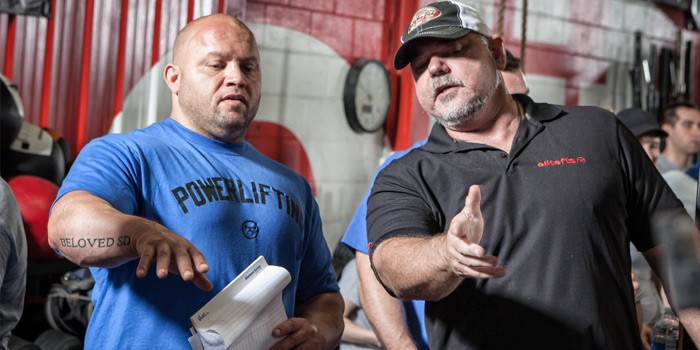
The problem with training Attention Deficit Disorder is that it can really hinder progress. A lot of times it comes at the cost of paralysis through analysis. I live by the rule of constant motion. Even when I'm not sure what I want or need to do, I just do something. This ensures I'm at least accomplishing work and work never goes wasted in my opinion. However, through it all, I have kept the bones of my programming the same.
At the base, my training day starts with 5/3/1 programming for the main movement of either the bench, overhead press, deadlift, or squat. After that it seems like anything goes lately. There are lots of different ways to shake things up with lifting when it comes to assistance work. In this blog I'm going to share a few of the approaches I implement. None of these ideas are original, but then again, not much is with lifting regardless of what anyone is trying to sell you.
A really easy concept is to use an overall rep count. Instead of the traditional 5 sets of 10 reps or whatever you choose, just go with an overall rep count. Simply choose a total rep count and then hit it in as few sets as possible. I used this on dips the other night. I picked 50 reps and ended up with a set of 30 and a set of 20.
Sometimes I'll mess around with time under tension. For those of you not familiar with it, it's basically using a cadence to control the speed of your reps, usually when lowering it, also known as the eccentric portion of the lift. Controlling the negative part of the lift is associated with greater hypertrophy which is a fancy way of saying growing bigger muscles. For this I'll use a count in my head of "one" on the way up and then "one, two, three, four" down. This style of lifting is definitely good if you're looking for a pump.
Another fancy option is to use accommodating resistance. This is done by adding bands, chains, or both to a lift. They are most commonly used with main lifts of the squat, bench, and deadlift to bring up weak points. However, they can be used for assistance work to spice things up. You can even simply use bands or chains for the lift itself. I've been known to do some chain curls or side raises. If nothing else, they look cool.
Rest intervals are another good place to shake things up. Reducing rest intervals just makes work harder. When I want to keep things moving I set a timer for 30 seconds. Another fun, or sadistic way to play around with rest intervals are rest pause sets. For these complete your first set with moderate weight for a pre-determined amount of reps. Once finished count ten good breaths and then take your next set. Try to get the amount of reps you hit on the first, but don't be surprised if you don't get them all. Then it's another ten breaths before the last set where you go to failure. These are brutal.
I think my favorite go to for assistance is setting up a circuit. I like these because they add a certain amount of conditioning to weight training. They are also very economical regarding time. For these you take all of your assistance exercises and you complete one set of each without taking a rest. My usual break between circuits is about a minute, pretty much the time it takes to regain somewhat normal breathing. I'll usually run through four to five circuits in a session.
Again, none of this is revolutionary. I'm certainly not going to tell you that juggling these concepts around is optimal either. Hopping around doesn't extend itself to making linear progress on assistance, but sometimes you just have to shake things up when you are in a funk. As long as you are staying true to your main work, you're going to make progress








